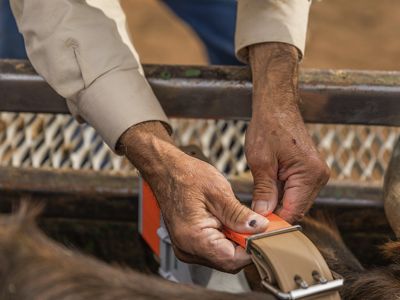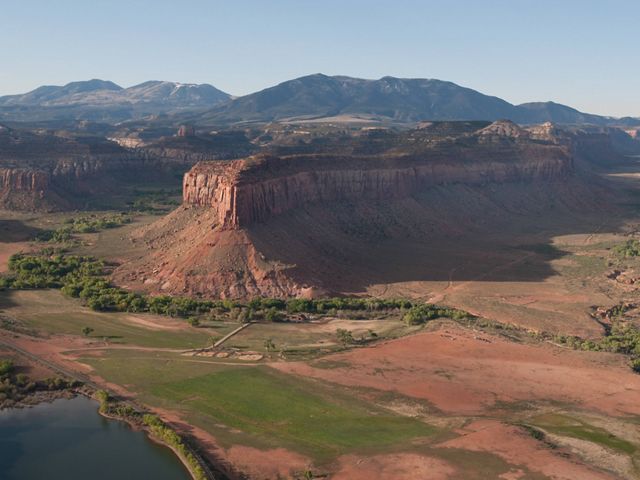
A Different Breed
An old ranch tries a new trick: desert-friendly cattle
Fall 2019
Climate change looms large at Dugout Ranch, a 5,200-acre property in southern Utah. The ranch—located on the edge of Canyonlands National Park—was acquired by The Nature Conservancy in the 1990s to prevent the picturesque property from being subdivided and to launch a new conservation research center. Today, cattle still graze the property and 500 square miles of adjacent public lands, but researchers warn the ranch and others like it face a new threat: Native grasses, the mainstay of grazing cattle, will decline under warming conditions in arid lands like this one. One solution being tested at the ranch: a different breed of cattle.

The Criollo
In 2018, Matt Redd, who manages the ranch and the Canyonlands Research Center now located there, added 10 Criollo cows to his herd. Typically, U.S. herds consist of Angus or other European cattle brought to the United States. The Criollo, however, are descended from Spanish cattle brought to Mexico centuries ago. They’ve evolved in northern Mexico’s rocky arid climate instead of the cooler, wetter climates of northern Europe.

Initial studies from New Mexico State University and the Jornada Experimental Range—a field laboratory studying rangeland science—suggest that the Criollo could be better suited to drier climates. They seem to travel farther for water and eat a more diverse diet than Angus, potentially making them less reliant on native grasses.
“Numerous lines of evidence suggest that some of the native perennial grass species, which are really important for the livestock producers, will lower cover and lower productivity under future warming conditions,” says Mike Duniway, a U.S. Geological Survey ecologist working out of the Canyonlands Research Center.
Quote: Mike Duniway
Drought experiments, modeling, surveys through time—all of that suggest future substantial risks to livestock producers and the way they do business.

Tracking Research
To better understand whether the Criollo could be an option for livestock producers that puts less stress on a struggling landscape, Duniway and the Dugout team fitted 10 Criollo and 10 Angus with GPS collars in October 2018. They’re now tracking where they graze to determine whether the initial results found by the Jornada Experimental Range scientists in New Mexico are also true in Utah’s canyonlands environment.
“The first stage is to infer what their impact might be on the desert,” Duniway says. The second stage? “Analyze their poo to figure out what they’ve been eating.”
Studies on the economics of the new breed—whether they’re financially a good decision for livestock producers—would follow. Much of the American cattle industry and infrastructure is built around the larger Angus breed, Duniway says. And the final test, of course? Taste.

Get the Magazine
Sign up to become a member of The Nature Conservancy and you'll receive the quarterly print edition of the magazine as part of your membership.
